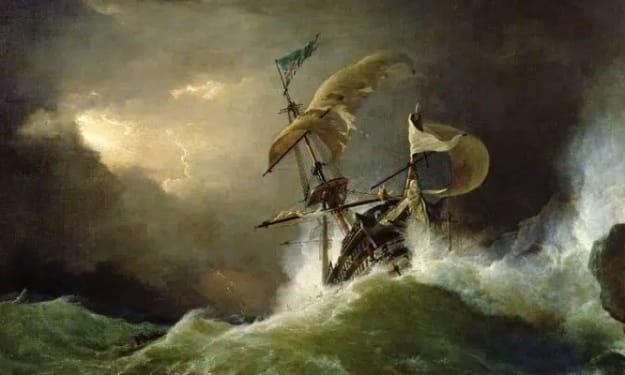The Lost Ancient Red-Paint People
An Ancient Civilization on the Northern Atlantic Coast

The search for the secrets of the vanished red-paint civilization continues. Unearthing clues in Maine and Labrador sheds light on ancient societies in North America. The ancient culture near the Arctic Circle challenges preconceived notions about Native American history. Speculations by antiquarians on the origins of ancient stone ruins and mounds in America led to theories of a lost civilization. Historian Hamlin proposed that these ruins could have been constructed by Europeans before Columbus, potentially the Lost Colony of the Vikings. In the 19th century, antiquarians developed theories about an advanced civilization in America based on the sophisticated mound builders. Moorhead's discoveries and hypotheses significantly influenced the understanding of the red-paint people. Despite the absence of skeletal evidence, Moorhead's findings contributed to the acknowledgment of a highly developed culture. His prediction of long-distance trade was eventually validated with the uncovering of the stone source in Rama Bay. The rediscovery of artifacts belonging to the Red Paint People in Maine, particularly at the Nevin site in Blue Hill Bay, showcased bone artifacts embellished with intricate geometric patterns.
The presence of toggling harpoons and swordfish remains indicated that the Red Paint People were skilled seafarers. The advanced tools and settlements of the Red Paint People point towards a sophisticated society. Similar woodworking tools found in red paint burials and along the Northwest Coast hint at advanced technological capabilities. Challenges arise for archaeologists due to ocean erosion and abandonment, making it difficult to fully comprehend the way of life of the red paint civilization. The discovery of North American Indian remains in Maine, dated over 4,000 years old, was confirmed by physical anthropologist Jim Anderson. The site revealed evidence of advanced sea-hunting technology utilized by the ancient inhabitants. Shamans communicating with animal spirits of the sea marked a significant advancement for ancient cultures. Ancestors' skulls were carefully chosen for rituals that lasted for hours or even days, during which the shamans entered a trance-like state to communicate with the spirits of the natural world. This transition from land spirits to sea spirits allowed for the development of maritime travel and trade, showcasing the advanced navigational skills and cultural unity of the maritime archaic people.
Despite the challenging environment of the far north, these people adapted through intensive maritime practices, resulting in a homogeneous culture that extended from the forest fringe to the temperate zones. The culture of the Red Paint People was revealed through their burial practices, and the raised ridges of beach stones likely served as living areas for them. Evidence of human activity within the Boulder lines, including artifacts and structures dating back over 4,000 years, suggests the presence of a sophisticated society. Stone monuments in Labrador had both spiritual and practical purposes, potentially serving as markers for settlements and navigation aids. The theory of cultural diffusion is supported by the similarities in tools between Norway and North America, as proposed by Norwegian anthropologist Yessing. Yessing believed that a single circumpolar culture originated in central Russia, with spiritual beliefs in both hemispheres being connected, as evidenced by aligned dot patterns in engraved bones. The bone daggers found at the Nevin site were not only used for practical purposes but also served as ornaments and had spiritual significance.
Footage from the Norwegian Arctic depicts a Lapis Shaman engaging in a ritual with a standing stone that may be thousands of years old, highlighting the spiritual traditions of Northern cultures. Yessing's theory of land diffusion was initially praised by colleagues but lacked evidence, as archaeologists in central Russia and western Canada could not find proof of a diffused circumpolar culture. Burials in Tebiak with red paint suggest a possible link to megalith builders in Europe. The Tebiak cemetery in Brittany, France, dates back over 7,000 years with burial rituals similar to those in Europe. The red paint people of Tebiak may be ancestors to the megalith builders, indicating a sea-going culture. Discoveries at the Labrador site, dating back several thousand years before Christ, reveal burial pits and a unique crypt. Excavation uncovers a circular arrangement of boulder constructions, suspected as a burial site, revealing the presence of cultural activity.
The discovery challenges previous interpretations of tomb distribution and suggests a fishing-based economy influenced the construction of the tombs. This site is the earliest known Maritime archaic burial site in North America, with ritual fires and charcoal samples radiocarbon dating to 7,500 years ago. Evidence suggests cultural development parallel on both sides of the Atlantic. The red paint people were sophisticated sea mammal hunters with a mysterious disappearance. The oldest toggling harpoons ever found indicate their sophistication as sea mammal hunters. Their culture flourished for about 4,000 years before suddenly vanishing from the archaeological record
About the Creator
Isaac Ekow Anyidoho
A calm person with a cascading mind filled with ideas of my own and know that; I can make a difference with the support of people like you. Thank you.
Enjoyed the story? Support the Creator.
Subscribe for free to receive all their stories in your feed.





Comments
There are no comments for this story
Be the first to respond and start the conversation.